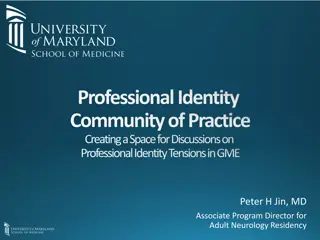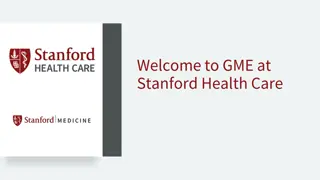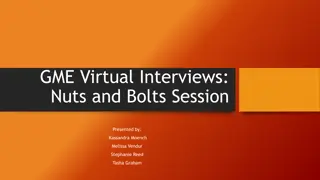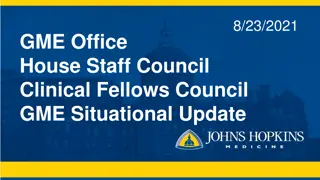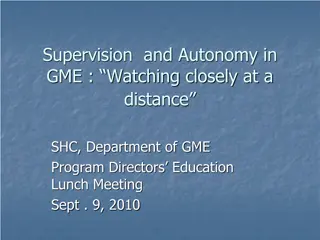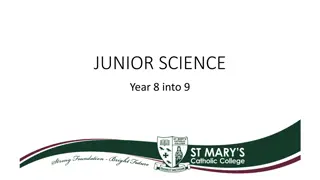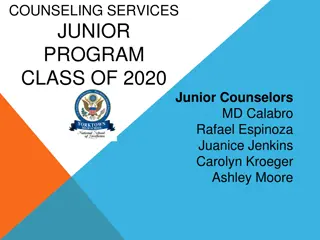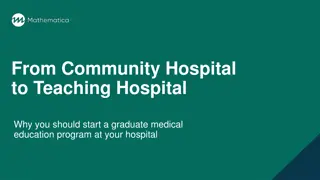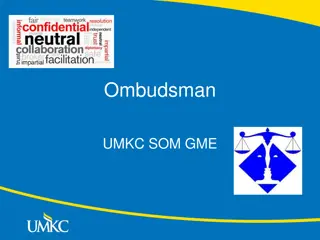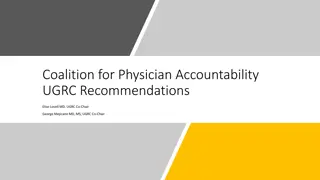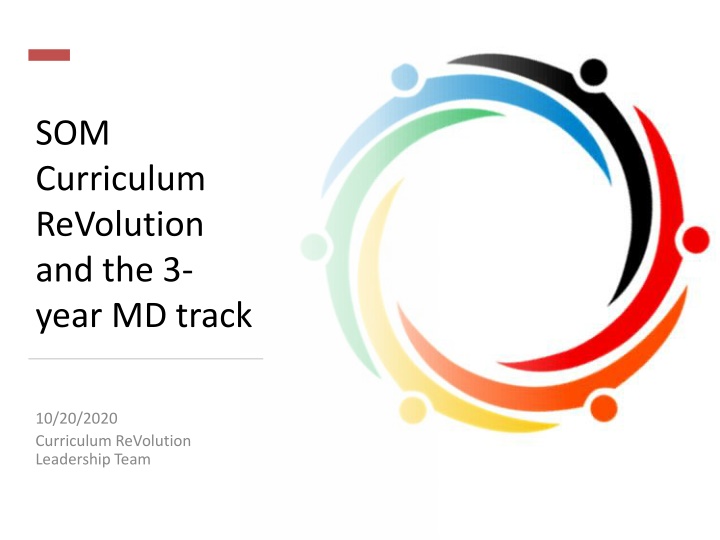
Innovations in Medical Education: 3-Year MD Program and Curriculum Revolution
Explore the transformative 3-Year MD track and curriculum revolution in medical education, focusing on principles of change, student pathways, and the why behind a condensed program. Discover the potential benefits, including cost savings, addressing physician shortages, and aligning with future residency needs.
Uploaded on | 0 Views
Download Presentation

Please find below an Image/Link to download the presentation.
The content on the website is provided AS IS for your information and personal use only. It may not be sold, licensed, or shared on other websites without obtaining consent from the author. If you encounter any issues during the download, it is possible that the publisher has removed the file from their server.
You are allowed to download the files provided on this website for personal or commercial use, subject to the condition that they are used lawfully. All files are the property of their respective owners.
The content on the website is provided AS IS for your information and personal use only. It may not be sold, licensed, or shared on other websites without obtaining consent from the author.
E N D
Presentation Transcript
SOM Curriculum ReVolution and the 3- year MD track 10/20/2020 Curriculum ReVolution Leadership Team
We are seeking GME programs that fall into 2 categories: 1. Partner on design AND wish to be considered for implementation (3-year MD students would be accepted to your program) 2. Partner on design of the 3 year track, but do NOT want to be considered for implementation
Principles of broad curriculum change OLYMPIC RINGS COLOR Single pass curriculum, block structure, consistent expectations Standardized weekly calendars Built in remediation space Each ring is for each continent on Earth SKIN COLOR Integrated longitudinal content Scheduled, full clinical day + Engaged, student-centered learning Decreased unintended redundancy Pathways to promote curiosity and inquiry
Block-based, Single Pass, 18-month Foundational Curriculum Each student selects a Pathway (spring year 1) -- relates to Capstone and other experiences 1-week Healthcare Delivery Systems/Pathway experience spring year 2 Redesigning Core Clinical Experiences (clerkships +, integrated interstitial) Step 1 likely to move into/after 3rd/clerkship year (supports purposeful integration in CCE) 2-week service learning/health systems/population experience in fall year 3 3-year MD track
Why a 3 Year MD Program? More students enter medical school with related skills Individualized pathways match student goals Lifetime savings potential $250,0001 Address the predicted physician shortage Alignment with specified residencies and programs Drive innovation in medical education 1Weiner S. AAMCNews. Friday, March 29, 2019. Available online at https://news.aamc.org/medical- education/article/med-school-3-years-future-medical-education/ . Accessed 4/10/19.
Draft Principles Launch August 2022 in sync with new curriculum Generalist disciplines (with demonstrated need) Limited number of disciplines and students; while sufficient to build community cohort Consistent foundational curricula with adjustments to summer, electives, potential partial parallel curriculum Multiple points of entry and exit Equity in admissions Robust assessment and support Potential early clinical experiences in residency clinics, role modeling and mentoring from residents and faculty
The Big Picture: 3 year track will align with generalist disciplines and our own residency programs meeting the needs of the Commonwealth and our Healthcare System Acceptance Assessment Equity Alignment
We are seeking GME programs that fall into 2 categories 1. Partner on design AND wish to be considered for implementation (3 year MD students would be accepted to your program) 2. Partner on design of the 3 year track, but do NOT want to be considered for implementation
Admission Process Student Profile Expresses a strong commitment to a specific Generalist Discipline Exhibits mature behavior to complete an accelerated MD program Has a strong academic record predictive of success Application Processes 1. Secondary application with MD application 2. Must be accepted to MD program first 3. During M1 year 4. After M1 year 5. Anytime during M2 6. After PhD
Selected medical Schools with 3-Year Medical Program Current 3-Year MD Programs Interested in Developing 3-Year MD Program 1. Columbia U College of Physicians and Surgeons University of North Carolina School of Medicine, Chapel Hill* 2. Cooper Medical School of Rowan University* Medical University of South Carolina* 3. Cumming SOM University of Calgary Hackensack Meridian School of Medicine at Seton Hall University* 4. DeGroote SOM (Ontario) McMaster U 5. Duke University SOM* 6. Medical College of Wisconsin* *Member of Consortium of Accelerated Medical Pathway Programs 7. Mercer U SOM* 8. NYU SOM Langone Health* 9. Ohio State SOM* 10. Pennsylvania State COM* 11. Renaissance SOM at Stony Brook U 12. Rutgers Medical School 13. Texas Tech U Health Science Center SOM* 14. U of CA Davis SOM* 15. U of Kentucky SOM* 16. U of Louisville SOM*
Typical Week Do we utilize any of this time for 3 year track students?
Longitudinal Assessments Competencies NBME (pre-clinical and clinical) EPAs Milestones?
3 Year MD Track draft 18 3 Year MD Track draft 18 mos mos
Existing Global health Rural health Urban health Clinical and Translational Research Baseline Clinical care Leadership Biomedical Innovation, Design, Device development Diversity LGBTQ care, race/bias HSS (QI, HCP) Humanities Community engagement Education (patient, peers, community, medical education) Simulation Advocacy (community, political) Care of vulnerable populations LatinX health/Spanish immersion Potential Pathways
Moving step 1 AFTER the start of Core Clinical Experiences Fosters clinical-biomedical learning Step 1 is increasingly clinical Allows preclinical space for other curriculum Would require some curriculum building for clinical-biomedical connection each rotation "I felt that there was too much emphasis in the MS1 and MS2 years about preparing for Step 1 at the expense of developing a very strong clinical knowledge for the future. The program I am at doesn't have their students take step 1 until after their first year of clerkship and I feel that their clinical knowledge is much stronger than the average UMass student." Most schools report an increase in scores Jurich D, Daniel M, Paniagua M, et al. Moving the United States Medical Licensing Examination (USMLE) Step 1 after core clerkships: An outcomes analysis. Acad Med. 2019;94:371 377.

